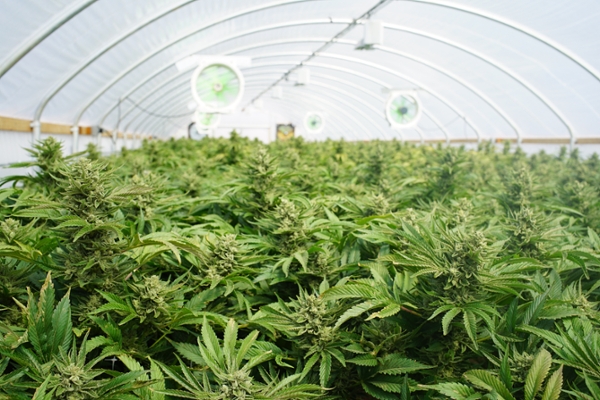The Johnson Shoyama Graduate School of Public Policy (JSGS) has issued an in-depth policy paper on the legalization of cannabis in Canada. By July 2018, the production, distribution, and sale of cannabis will be legal across the country. Faced with the scope of the policy issues and the time pressure to put an effective regulatory system in place, the JSGS has released a report examining the policy challenges.
This Policy Brief is a summary of the longer paper.
Introduction
The legalization of marijuana, whether as a point of public debate or explicit policy action, has been on the public mind in Canada for decades. It reaches back to the 1969 LeDain Royal Commission on the non-medical use of drugs. Among its recommendations was repeal of the criminal law prohibiting possession of cannabis.
Now, almost half a century later, the Cannabis Act (Bill C-45) will come into force in July 2018, permitting the legal production, distribution, and sale of cannabis for recreational purposes in Canada. With it will come far-reaching economic and social implications for policy makers in every province, the same ones contemplated by the LeDain Commission.
The Government of Canada’s decision to legalize cannabis is driven by three core objectives:
- Restrict youth access;
- Mitigate the illicit market through serious criminal penalties; and
- Protect public health and public safety.
A key policy challenge is timing. Provincial governments have been given a very limited time-frame to design and implement the guidelines, legislation, and programs required for legalized cannabis. Developing policy on cannabis is particularly difficult as the legislation is, in effect, creating a new sector which at this point lacks any significant, longer-term, evidence-based system of best practices.
The complexity legalization of cannabis presents is that it cuts across a number of different policy domains, including public safety, public health, economic development, taxation, and innovation. While some provinces and professional associations have understandably requested more time to prepare for legalization, the federal government has shown no inclination to postpone the legislation. It argues any delay would mean continued easy youth access and high profits for illicit market participants.
Implications
The starting point in the policy analysis is recognition of today’s reality: The illicit cannabis market in Canada is thriving. Millions of Canadians buy cannabis products illegally every year, and illegal, but largely tolerated store front retail outlets have dramatically increased in number. In addition, Canadians are already buying recreational cannabis and cannabis-derived products online. Elimination of the illicit market will require long-term coordination of regulation, criminal enforcement, and an effectively run legal market. Realistically, such a large and well-established illicit market will not be eliminated immediately upon legalization. Therefore the near-term focus must be on reducing the size and reach of the illicit market.
What that means is implementation of the Act will require significant public investment in policing. Simply put, the legalization of cannabis does not mean legal issues will disappear. For example, the high costs associated with impaired driving will include deploying testing devices in police cruisers, training and on-going certification for officers as qualified drug recognition experts (DRE), and expansions in community-policing initiatives. Responsibility for these costs is unclear, but it is incumbent on governments to ensure law enforcement officials have the resources and technologies necessary to present credible evidence before the courts. In addition, legal expertise on impairment will be required to close current loopholes as Canadian courts remain skeptical about the link between the mere presence of drugs in a driver’s system and legal impairment of driving ability. DRE evidence is routinely challenged and rejected with defence counsel commonly questioning the validity of the officer’s initial request for impairment testing.
Minimizing harm to public safety and public health will require action on at least two issues – youth consumption and the “natural product” belief. Use of cannabis is linked to a wide variety of negative health and wellbeing outcomes – particularly its harmful effects on mental health. The risk of these harms is greatest in utero and during childhood development. Currently, however, those between the ages of 18 to 24 years old are the mostly likely to use
cannabis, with those aged 12 to 17 a close second (Government of Canada, 2017). Further, Canada has the highest rate of cannabis use among youth of any developed country (UNICEF Office of Research, 2013) . Clearly, reducing cannabis use in these age groups is critical to the success of legalization.
The “natural product” belief is that cannabis is harmless because it is simply a plant. This misguided notion must be directly addressed through education. Cannabis available through the illicit market can be tainted with agricultural chemicals, synthetic drugs designed to increase potency, mildew, mold, heavy metals, bacteria or other materials, the consumption of which is clearly harmful. Moreover, the cannabis available in the illicit market today has much greater potency than 30 years ago. In fact, medical research has linked cannabis consumption to increased risk of heart attack, stroke, testicular cancer, and lung disorders (Hall, 2015; Hemachandra, McKetin, Cherbuin, & Anstey, 2016). Finally, cannabis is addictive for a portion of users and recovery from cannabis dependence is difficult. As a result, revenue from the taxation of cannabis should be invested in education and health-care-related costs, as well as to support research and policy evaluation in the cannabis sector.
For those who question how the additional public costs will be financed, the answer is that the economic benefits provided by a legal market for adult-use-recreational cannabis are more than sufficient to cover the costs of the recommended policy interventions. A study by the consulting firm Deloitte estimates the value of the current retail market (ignoring related markets such as paraphernalia) to be between $4.9 billion and $8.7 billion per year. However, the current legal production is much lower than demand. Legalization will therefore provide significant economic opportunities at the production and retail levels. These opportunities are enhanced by the first-mover advantage Canada will gain as the first country to normalize cannabis consumption and production – which will provide opportunities to develop global markets and supply-chain innovation.
As reflected in the federal government’s three policy objectives, successful legalization of adult-use cannabis requires policies that enable the legal market to displace the illicit market. Although the illicit market has an established consumer base, assuming competitive pricing, a safer and more reliable supply in a legal market will be preferred by most consumers. Thus, displacing the illicit market will require that legal providers and regulators can and do provide a safe product in a safe place. This differentiation between the legal and illicit markets will need to be supported by public-awareness campaigns.
In order to capture the benefits of safe legal cannabis the retail price to consumers of legal cannabis must be competitive with prices in the illicit market. This clearly places limits on taxation, production costs, distribution costs, retail overhead, and profit margins at all stages of the market. Furthermore, catering to consumer preferences, such as edibles or craft products (such as small batch organic or local cross breeds), may be another method of enhancing preferences for the legal market. Many cannabis consumers will likely resist changing suppliers, and as a result there will likely be a prolonged transition period between illicit and legal markets, the length of which will be directly impacted by these early policy choices.
In a study on the implications of recreational-adult usage-cannabis in Saskatchewan conducted by the Johnson Shoyama Graduate School, researchers found both opportunities and challenges to legalization. Analyzed through the various lenses of public safety, public health, economic development, and innovation the research identified competing goals that must be managed by policy makers in a highly integrated and collaborative fashion. Of all the policy tools available to govern the sector none will be more important than information and regulation.
Key Recommendations
Experiences of Other Jurisdictions
Three American states have significant experience with legalization. Colorado, Oregon, and Washington have all allowed the sale of recreational cannabis for at least two years. Additionally, Uruguay legalized cannabis in 2013. None of these jurisdictions has experienced significantly negative effects from legal cannabis. In all cases, estimated use has been stable or dropped, youth consumption remained stable, or, in the experience in the American states, has declined. As well, all have seen positive economic impacts as a result of legalization.
Conversely, these jurisdictions have also experienced increases in impaired driving and its consequences. Clearly, as a result, impairment will have to be addressed through education and policing. The second prevalent cost of legalization in these jurisdictions has been an increase in accidental ingestion, primarily by children. Again education will have to be improved to address this issue.
Full Spectrum Public Education
A series of coordinated information campaigns focused on prevention, awareness, health promotion, and treatment must be designed and executed to limit the negative impacts of the newly legal cannabis industry. Educating the public on the new laws and informing citizens of the various aspects of legalization including legal limits of possession, household cultivation, levels of consumption, and changes to the criminal code will also be a necessity. In addition, enhancing literacy and health promotion through targeted campaigns for youth, parents, expecting mothers, and vulnerable populations about the potential harmful health effects of cannabis will be required. Finally, information campaigns on prevention of misuse, impaired driving, and, treatment programs will be essential.
Harmonizing Legal Cannabis Age Limit with Legal Age Limits of Alcohol
Harmonizing the legal age to purchase cannabis and alcohol is the most effective way to restrict youth access. For example, if the legal age to purchase and consume alcohol is 19 years (as in most provinces) and the legal age for cannabis purchase and consumption is set at 18, those aged 18 will be pushed toward the consumption of cannabis rather than alcohol. Conversely, if the age for cannabis is set higher than 19, those 19 but not yet of age for cannabis will be pushed toward consumption of alcohol rather than cannabis. By synchronising the legal age for consumption of both alcohol and tobacco will prevent this implicit policy bias. If the minimum age is set too high then youth will continue to access the illicit market. As young adults currently constitute the largest segment of the illicit market this would undermine attempts to mitigate organized crime by police.
Regardless of the specifics of age restriction, some degree of underage consumption is inevitable. To reduce social harms associated with irresponsible cannabis use, we recommend that the age restriction be complemented by evidence-based drug education programs that encourage responsible use and healthy lifestyles.
Policing Resources and Capacity Development
One of the main objectives of legalizing and regulating cannabis is to displace the Canadian illicit cannabis market. With legalization, the role of law enforcement will change significantly. The longterm goal of legalization is to shift the role of police from enforcing criminal prohibitions to other more constructive activities and reducing pressure on the court system. But this will take years to achieve, as new regulation will require enforcement in cases where
cannabis continues to be sold illegally. If the legal regime (e.g., production, distribution, taxation, price, consumer access, etc.) is too complex, onerous, or inflexible, organized crime will continue to meet demand via the illicit market. Law enforcement officials will need to be provided with the resources and technologies necessary to fulfill their changed role. A portion of all taxation should be invested in supporting police to succeed in this longterm goal.
Addressing Impaired Driving
Impaired driving (due to alcohol, drugs, or both) is a significant problem in Canada, bringing with it tremendous human and financial costs. As with alcohol, cannabis-impairment results in significantly increased risk of being involved in a car accident. No one should underestimate the challenge this presents to health and public safety. The federal government’s legislative changes to drug impaired driving laws have established some of the strictest laws in the world. However, charges can only be laid when an officer has reasonable grounds to suspect the driver is drug impaired. Successfully identifying impairment due to cannabis means that law enforcement officers will require new resources, including, but not limited to, training as accredited Drug Recognition Experts, new road-side testing technologies, and up-to-date training of cannabis laws.
Assessing cannabis impairment of drivers requires different resources from those assessing alcohol impairment. Roadside testing devises needed to measure levels of cannabis in a suspect’s body are expensive and lack the accuracy of blood alcohol breathalysers. Moreover, because cannabis is fat-soluble it can stay in an individual’s systems for up to 30 days. As a result, cannabis used legally on the weekend may still be detected several days later and accumulated over the course of weeks.
Market Structure
The federal government is allowing provinces to regulate how cannabis will be sold within the each jurisdiction. In response, cannabis producers licensed by Health Canada are vertically integrating to position themselves to ensure consumers can purchase directly from them utilising online ordering with mail delivery regardless of the decision of each jurisdiction. As such, provincial governments must decide how much of the distribution and retail activity associated with legalization to capture. Choosing not to regulate distribution and retail within the province will ensure that all economic activity and profit associated with distribution and retail remains outside the province, limits the ability of provincial policy makers to minimize the harms and risks associated with cannabis legalization, and limits the economics benefits for the people of the province. The greater the distribution and retail operations located within the province by local firms, the greater the influence of provincial regulation and as such, the lower the harms associated with the cannabis industry and the greater the economic benefits to the province.
We recommend that the government offer a limited number of licenses for the private retail sale of cannabis within the province and license a single distributor. As a result, it would limit cannabis coming into the province through ecommerce sales over the internet. This model offers the best combination of control over products being sold while allowing consumers to guide the market to provide the products demanded. Private retailers are incentivized to respond to consumers’ preferences, ensuring that retail outlets are stocked with cannabis that meets desires of consumers in terms of price, quality, and variety. It is this private sector profit motive that will make a legal retail sector an effective competitor to the illicit market. While a legal market populated by a large number of private retailers will offer the greatest competition to the illicit market, high-outlet density is positively correlated with earlier onset and levels of cannabis use. To limit this effect we recommend only a limited number (approximately 80) of geographically specific retail licenses be granted.
A single distributor creates a “choke point” for testing and packaging all cannabis entering the provincial market. It also allows for an effective, centralized seed-to-sale tracking system to be used to ensure that only safe legal cannabis is available to the people of the province. A single distributor will also have added bargaining power when negotiating with producers – allowing for better quality and variety to be sourced at a price that is competitive with the illicit market. As well, the distributor will be in a position to take advantage of economies of scale in sourcing, shipping and receiving, testing, packaging, and tracking, further supporting successful competition with the illicit market.
A single distributor with a mandate to test and package all cannabis products being sold in the province will aid in capturing the economic benefits of legalization. By consolidating testing and packaging with the single distributor a major barrier to entry for small local producers imposed by Health Canada is removed. The distributor will also be in a better position to work with regulators on developing and adopting the policies needed for the introduction of new products such as cannabis-infused edibles or beverages. These advantages will provide the best opportunity for local producers to grow and undertake the innovation necessary to compete beyond provincial borders.
Conclusions
Restricting youth access, mitigating criminal activity, protecting public health and safety, and ensuring a safe supply chain will all be critical for the success of the legalized cannabis sector. There are a number of opportunities to achieve these objectives while also maximizing economic opportunities and capitalizing on innovation. Given the complexity of this new policy field, the response must be multi-faceted, collaborative, and flexible. Governments must plan for cannabis abuse and be ready to offer treatment programming immediately. Large scale public information campaigns and more targeted awareness campaigns should be launched prior to the July 2018 legalisation date to ensure citizens understand the new laws, parents and youth understand the harms, and Canadians are exposed to education that helps them make healthy and safe choices. Resource investment in policing will be critical to achieve these goals, as will
be the infrastructure required to ensure strict product safety and quality requirements are achieved.
References
Government of Canada. (2017). Canada tobacco, alcohol, and drugs (CTADS): 2015 summary. Retrieved from https://www.canada.ca/en/health-canada/services/canadian-tobacco-alcohol-drugssurvey/2015-summary.html
Hall, W. (2015). What has research over the past two decades revealed about the adverse health effects of recreational cannabis use? Addition, 19-35.
Hemachandra, D., McKetin, R., Cherbuin, N., & Anstey, K. (2016). Heavy cannabis users at elevated risk of stroke: evidence from a general population survey. Australian and New Zealand Journal of Public Health, 226-230.
UNICEF Office of Research. (2013). Child well-being in rich countries: A comparative overview. Innocenti Report Card 11. New York: United Nations. Retrieved from https://www.unicef-irc.org/publications/pdf/rc11_eng.pdf
Kathleen McNutt

Kathleen McNutt is the Executive Director of the Johnson Shoyama Graduate School of Public Policy with campuses at both the University of Regina and University of Saskatchewan. Kathleen is a full professor at the University of Regina, and an adjunct professor at the University of Saskatchewan. She holds a PhD for Simon Fraser University, a Masters of Arts from the University of Alberta and a Bachelor of Art honours from the University of Regina. Professor McNutt regularly facilitates professional development workshops for the school’s executive training program and teaches various public policy courses at the school. Kathleen has over 30 scholarly peer reviewed publications, a variety of academic chapters and public reports, and has presented her research all over Canada and Europe. Her main research interest include social media, public engagement, energy and climate change, and she commonly studies complex policy issues using advanced policy analysis techniques. She sits on a number of energy and climate change working committees including projects focused on carbon capture and storage, nuclear power, and clean energy.
Jason Childs

Dr. Jason Childs is an Associate Professor of Economics at the University of Regina who teaches experimental/behavioural economics as well as the Economics of Beer. His primary research area is experimental economics focusing, of late, on dishonesty and trust. He has also examined the demand for alcoholic beverages in Canadian provinces, focusing on the ability of pricing to manage consumption. He has conducted a wide variety of policy work for provincial governments and professional organizations. He is also a co-author of introductory level texts in macroeconomics and microeconomics. Most recently he contributed to a report on the effective regulation and management of the soon to be legal cannabis market in Saskatchewan. His work has been published in a wide variety of academic outlets including the Journal of Public Economics (2004), Review of International Economics (2006), Computational Economics
(2007), Journal of International Financial Markets, Institutions and Money (2009), Economics Letters (2012, 2013), Business and Society Review (2012), International Journal of Liberal Arts and Social Sciences (2014), and Applied Economics Letters (2017).
George Hartner

George Hartner is a Lecturer in the Department of Economics at the University of Regina. George’s academic areas of focus are in Financial Economics and Economic Evaluation. George has extensive professional experience in the areas of public policy development, program evaluation and in strategic operational and financial management.
People who are passionate about public policy know that the Province of Saskatchewan has pioneered some of Canada’s major policy innovations. The two distinguished public servants after whom the school is named, Albert W. Johnson and Thomas K. Shoyama, used their practical and theoretical knowledge to challenge existing policies and practices, as well as to explore new policies and organizational forms. Earning the label, “the Greatest Generation,” they and their colleagues became part of a group of modernizers who saw government as a positive catalyst of change in post-war Canada. They created a legacy of achievement in public administration and professionalism in public service that remains a continuing inspiration for public servants in Saskatchewan and across the country. The Johnson-Shoyama Graduate School of Public Policy is proud to carry on the tradition by educating students interested in and devoted to advancing public value.
